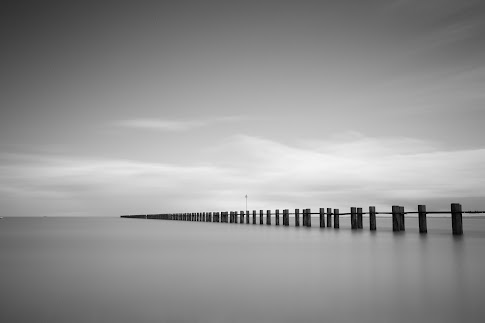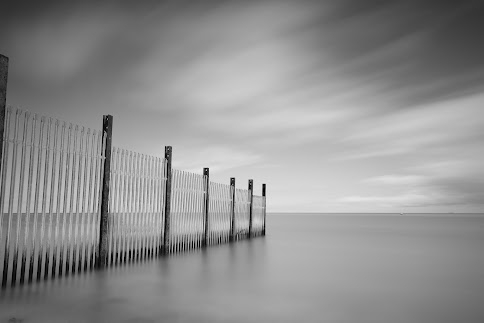Shoeburyness Anti Submarine Boom
To prevent enemy ships and submarines from entering the Thames estuary, a defensive barrier known as a boom was laid across the estuary from Shoeburyness in Essex to Sheerness in Kent, a distance of 9 kilometers. In the shallow water at either end, closest to the land, the boom was formed of wooden piles driven into the sandy seabed and reinforced with concrete. In the deeper sections of the water channel, the boom became an anti-submarine net consisting of timber floats joined together with heavy chains. The boom had two gates, one located on the Medway channel leading into Sheerness and the River Medway, and another on the Yantlet channel leading to the Thames and London. These gates were guarded by the Royal Navy’s vessels. Additional defense cover was provided by the nearby Maunsell Sea Forts and by a coastal battery at Shoeburyness. A second boom was placed across the Thames at Canvey Island.
The History and Significance of the Shoeburyness Anti-submarine Boom
Welcome to our blog where we delve into the intriguing history of the Shoeburyness Anti-submarine Boom. This fascinating structure has played a crucial role in defending the shores of England during World War I and World War II, making it a significant piece of military history.
What is the Shoeburyness Anti-submarine Boom?
The Shoeburyness Anti-submarine Boom was a defensive barrier constructed across the Thames Estuary in Shoeburyness, Essex, UK. It consisted of steel nets, mines, and other obstacles designed to prevent enemy submarines from entering the estuary and reaching the vital ports of London.
Importance during World War I and World War II
During World War I, German U-boats posed a serious threat to British shipping, leading to the construction of the anti-submarine boom in 1918. It successfully deterred enemy submarines and protected the crucial supply routes to London.
In World War II, the boom was reactivated and strengthened to defend against the renewed threat of German U-boats. It played a key role in safeguarding the port of London and ensuring the safe passage of Allied ships.
Legacy and Preservation
After the wars, the Shoeburyness Anti-submarine Boom was gradually dismantled, but some remnants still exist as a reminder of its historical significance. The boom serves as a testament to the ingenuity and determination of those who worked tirelessly to defend their country during times of conflict.
Efforts are being made to preserve and commemorate the anti-submarine boom as part of England's military heritage. It stands as a symbol of the bravery and sacrifice of those who served in the defense of their nation.
Conclusion
The Shoeburyness Anti-submarine Boom holds a special place in the annals of military history, representing a time when innovative defenses were crucial in protecting against enemy threats.
I have taken a few long exposure photos of the boom. Click here for the exact location.
I was using a 0.9ND Grad with a 15 stop Lee filter as it was bright sunshine.
The image below is just to the left of the boom.









